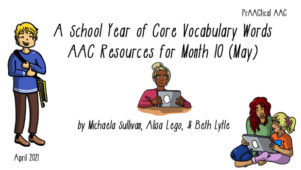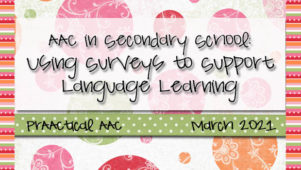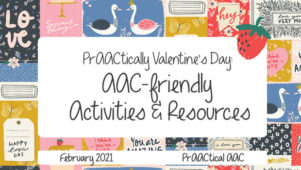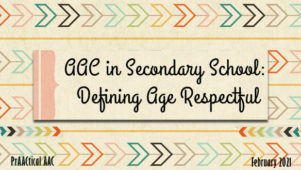PrAACtical Collaboration: Teaming Up to Build Communication with a Treat Cart (Part 2)
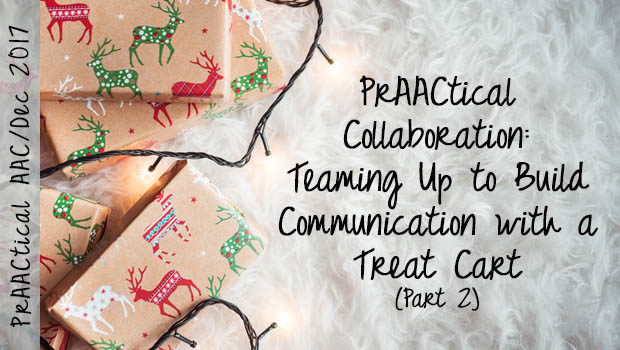
 Today, we hear more from Colorad0-based SLP Kimberly Walker who explains more about how they use the Treat Cart activity to support the communicative development of her students with AAC needs. You can see the first part of her post here.
Today, we hear more from Colorad0-based SLP Kimberly Walker who explains more about how they use the Treat Cart activity to support the communicative development of her students with AAC needs. You can see the first part of her post here.
———————————————————
The Treat Cart has made our co-treating planning so simple. The first Thursday of the month we take inventory to see what things we need to buy to restock our cart. We have done this by making a graph with paper and also doing an actual object graph with the products and sticky notes to simulate the products gone. We target the language of more and less and also work on making a list to take to the store. On the second Thursday of the month, we work on identifying environmental print of the products we are selling and practice selling to each other targeting the skills in our Rubric. The third Thursday of the month we work on money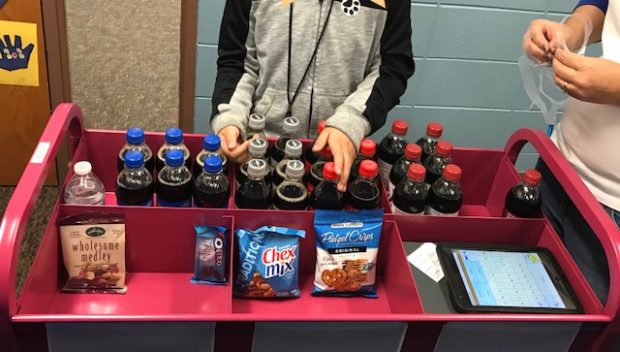 skills. Matching coins and identifying the coins by name. Eventually, we hope to do work on money values and making change. The fourth Thursday of the month we get out and sell to the school. Our entire school is invested in this project and love seeing students use their AAC devices in actions. The students are seeing the power of using their voice.
skills. Matching coins and identifying the coins by name. Eventually, we hope to do work on money values and making change. The fourth Thursday of the month we get out and sell to the school. Our entire school is invested in this project and love seeing students use their AAC devices in actions. The students are seeing the power of using their voice.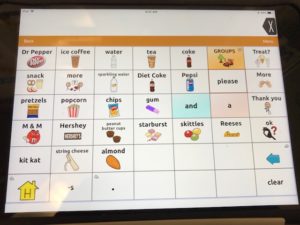
You can get copies of our materials here:
Addressing Pragmatic, AAC, and Language Goals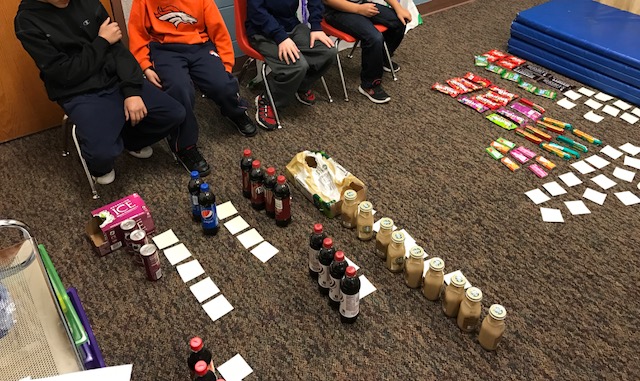
The Treat Cart provides many opportunities to work on multiple goals that students with communication delays need. Since there are so many goals you can target it may be hard to determine where to start. I always go back to the foundation language skill the student is lacking. This is usually a general skill that you can work on in every therapy session/throughout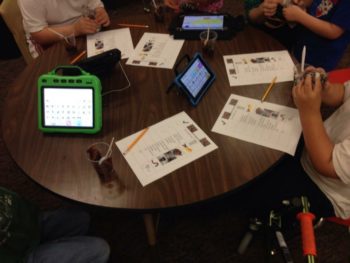 the school day, not just with the Treat Cart. I also collaborate with my team to determine the best goal for each student and so as a team, we can be working on all of the students’ goals that were developed to maximize their progress throughout the school day. Here are some examples of pragmatic and AAC/Language goals I have used for IEP’s for students that participate in the Treat Cart.
the school day, not just with the Treat Cart. I also collaborate with my team to determine the best goal for each student and so as a team, we can be working on all of the students’ goals that were developed to maximize their progress throughout the school day. Here are some examples of pragmatic and AAC/Language goals I have used for IEP’s for students that participate in the Treat Cart.
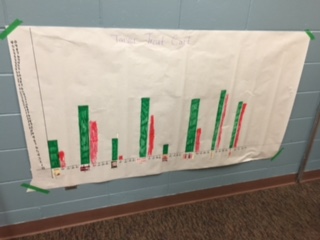 Pragmatic Language Goals:
Pragmatic Language Goals:
- By December 2018, given visual and/or verbal cues, ________ will greet adults and peers in 4/5 opportunities over three consecutive sessions within the school community.
- By December 2018, given a structured language activity, ________ will develop a small conversation (3 talking turns) with an adult communication partner with 80% accuracy over three consecutive sessions with minimum cues within the school community.
- By December 2018, given visual and/or verbal cues, ________ will maintain a conversation by staying on topic and/or making appropriate topic transitions for up to 5 turns with both peers and adults in 4/5 opportunities over three consecutive sessions within the school community.
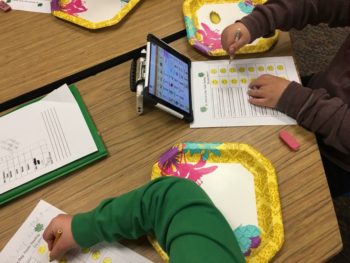
AAC/Language Goals:
- By December 2018, given verbal and/or visual prompts, _______ will independently label objects within a structured language activity using verbal, picture, and/or voice output responses with 80% accuracy over three consecutive sessions.
- By December 2018, given a structured language activity with visuals and verbal prompts, _______ will independently request an object (noun) using an alternative mode of communication (gestures, pictures, low tech voice output device) in 3/5 opportunities over three consecutive sessions with maximum decreasing to moderate cues.
- By December 2018, _________ will independently use a word/picture/sign to indicate a choice when given a verbal or visual cue in 80% of presented opportunities during a structured language activity in small group or in the general education classroom.
- By December 2018, given structured purposeful opportunities to use his/her voice output device throughout the school day, ________ will independently use his/her voice output device in the school community to request, comment, or give a greeting in 2 out of 5 opportunities with minimal cueing from an adult.
- By December 2018, ________ will independently answer a “yes/no” question(s) with his/her voice output device and/or a verbal response in a structured language setting with 80% accuracy outside the general education classroom.
- By December 2018, given a structured language activity, _____ will independently create a sentence in response to a question using his/her voice output device, with minimal prompts in 3/4 trials.
- By December 2018, given three pictures, ________ will use eye gaze to select the choice he/she would wants, in 3/5 opportunities over three consecutive sessions with moderate decreasing to minimum cues.
- By December 2018, ________ will independently access 2 switches in order to request/answer/comment during a structured purposeful activity within a school setting with 80% or greater accuracy.
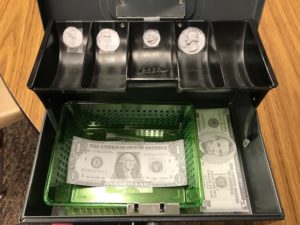 ———————————————————
———————————————————
About the Guest Blogger: Kimberly Walker, MS ED, CCC-SLP has worked Adams 12 Five Star School District for 15 years at Tarver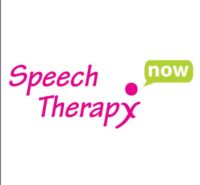 Elementary. She services K-5 students along with providing Speech and Language services to her school’s Significant Support Needs Program in which 6-9 students a year use AAC devices. Kimberly also owns Speech Therapy Now which is a private speech therapy company dedicated to providing first-rate speech/language resources for children, parents, and therapists. You can follow her to get therapy ideas on Facebook and on Twitter (@SpeechTxNow).
Elementary. She services K-5 students along with providing Speech and Language services to her school’s Significant Support Needs Program in which 6-9 students a year use AAC devices. Kimberly also owns Speech Therapy Now which is a private speech therapy company dedicated to providing first-rate speech/language resources for children, parents, and therapists. You can follow her to get therapy ideas on Facebook and on Twitter (@SpeechTxNow).
Filed under: Featured Posts, PrAACtical Thinking
Tagged With: AAC activities, classroom, education, school
This post was written by Carole Zangari

